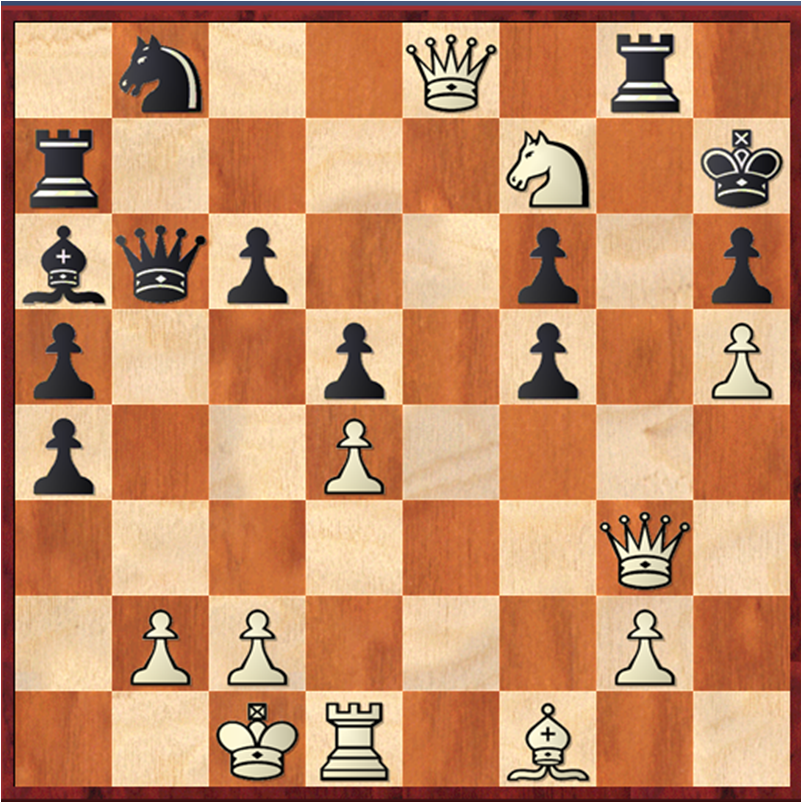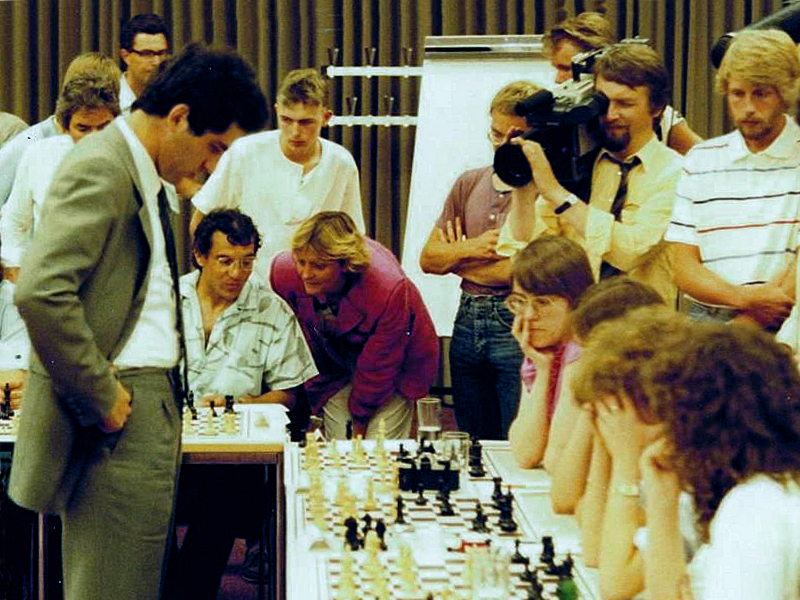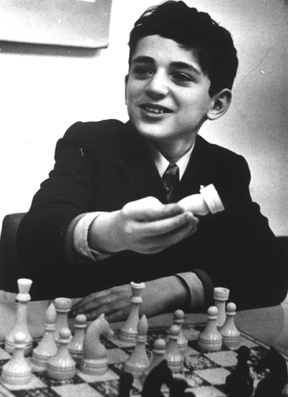|
Ply (game Theory)
In two-or-more-player sequential games, a ply is one turn taken by one of the players. The word is used to clarify what is meant when one might otherwise say "turn". The word "turn" can be a problem since it means different things in different traditions. For example, in standard chess terminology, one ''move'' consists of a turn by each player; therefore a ply in chess is a ''half-move''. Thus, after 20 moves in a chess game, 40 plies have been completed—20 by white and 20 by black. In the game of Go (game), Go, by contrast, a ply is the normal unit of counting moves; so for example to say that a game is ''250 moves long'' is to imply 250 plies. In poker with ''n'' players the word "street" is used for a full betting round consisting of ''n'' plies; each dealt card may sometimes also be called a "street". For instance, in heads up Texas hold'em, a street consists of 2 plies, with possible plays being check/raise/call/fold: the first by the player at the big blind, and the sec ... [...More Info...] [...Related Items...] OR: [Wikipedia] [Google] [Baidu] |
Sequential Game
In game theory, a sequential game is defined as a game where one player selects their action before others, and subsequent players are informed of that choice before making their own decisions. This turn-based structure, governed by a time axis, distinguishes sequential games from Simultaneous game, simultaneous games, where players act without knowledge of others’ choices and outcomes are depicted in Payoff Matrix, payoff matrices (e.g., Rock paper scissors, rock-paper-scissors). Sequential games are a type of dynamic game, a broader category where decisions occur over time (e.g., Differential game, differential games), but they specifically emphasize a clear order of moves with known prior actions. Because later players know what earlier players did, the order of moves shapes strategy through information rather than timing alone. Sequential games are typically represented using Decision tree, decision trees, which map out all possible sequences of play, unlike the static matr ... [...More Info...] [...Related Items...] OR: [Wikipedia] [Google] [Baidu] |
Chess
Chess is a board game for two players. It is an abstract strategy game that involves Perfect information, no hidden information and no elements of game of chance, chance. It is played on a square chessboard, board consisting of 64 squares arranged in an 8×8 grid. The players, referred to as White and Black in chess, "White" and "Black", each control sixteen Chess piece, pieces: one king (chess), king, one queen (chess), queen, two rook (chess), rooks, two bishop (chess), bishops, two knight (chess), knights, and eight pawn (chess), pawns, with each type of piece having a different pattern of movement. An enemy piece may be captured (removed from the board) by moving one's own piece onto the square it occupies. The object of the game is to "checkmate" (threaten with inescapable capture) the enemy king. There are also several ways a game can end in a draw (chess), draw. The recorded history of chess goes back to at least the emergence of chaturanga—also thought to be an ancesto ... [...More Info...] [...Related Items...] OR: [Wikipedia] [Google] [Baidu] |
Go (game)
# Go is an abstract strategy game, abstract strategy board game for two players in which the aim is to fence off more territory than the opponent. The game was invented in China more than 2,500 years ago and is believed to be the oldest board game continuously played to the present day. A 2016 survey by the International Go Federation's 75 member nations found that there are over 46 million people worldwide who know how to play Go, and over 20 million current players, the majority of whom live in East Asia. The Game piece (board game), playing pieces are called ''Go equipment#Stones, stones''. One player uses the white stones and the other black stones. The players take turns placing their stones on the vacant intersections (''points'') on the #Boards, board. Once placed, stones may not be moved, but ''captured stones'' are immediately removed from the board. A single stone (or connected group of stones) is ''captured'' when surrounded by the opponent's stones on all Orthogona ... [...More Info...] [...Related Items...] OR: [Wikipedia] [Google] [Baidu] |
Texas Hold'em
Texas hold 'em (also known as Texas holdem, hold 'em, and holdem) is the most popular variant of the card game of poker. Two cards, known as hole cards, are dealt face down to each player, and then five community cards are dealt face up in three stages. The stages consist of a series of three cards ("the flop"), later an additional single card ("the turn" or "fourth street"), and a final card ("the river" or "fifth street"). Each player seeks the best five-card poker hand from any combination of the seven cards: the five community cards and their two hole cards. Players have betting options to check, call, raise, or fold. Rounds of betting take place before the flop is dealt and after each subsequent deal. The player who has the best hand and has not folded by the end of all betting rounds wins all of the money bet for the hand, known as the pot. In certain situations, a "split pot" or "tie" can occur when two players have hands of equivalent value. This is also called "chop ... [...More Info...] [...Related Items...] OR: [Wikipedia] [Google] [Baidu] |
Community Cards
Community card poker is any game of poker that uses community cards (also called "shared cards"), which are cards dealt face up in the center of the table and shared by all players. In these games, each player is dealt an incomplete hand face down ("hole cards"), which are then combined with the community cards to make a complete hand. The set of community cards is called the "board", and may be dealt in a simple line or arranged in a special pattern. Rules of each game determine how they may be combined with each player's private hand. The most popular community card game today is Texas hold 'em, originating sometime in the 1920s. In home games, it is typical to use antes, while casinos typically use only blinds for these games. No limit and fixed limit games are most common, while spread limit and pot limit games are less common. The betting format and stakes can vary by region as well as time of year and volume (casinos often change games on weekends to accommodate incre ... [...More Info...] [...Related Items...] OR: [Wikipedia] [Google] [Baidu] |
Arthur Samuel (computer Scientist)
Arthur Lee Samuel (December 5, 1901 – July 29, 1990) was an American pioneer in the field of computer gaming and artificial intelligence. He popularized the term "machine learning" in 1959. The Samuel Checkers-playing Program was among the world's first successful self-learning programs, and as such a very early demonstration of the fundamental concept of artificial intelligence (AI). He was also a senior member in the TeX community who devoted much time giving personal attention to the needs of users and wrote an early TeX manual in 1983. Biography Samuel was born on December 5, 1901, in Emporia, Kansas, and graduated from the College of Emporia in Kansas in 1923. He received a master's degree in Electrical Engineering from MIT in 1926, and taught for two years as an instructor. In 1928, he joined Bell Laboratories, where he worked mostly on vacuum tubes, including improvements of radar during World War II. He developed a gas-discharge transmit-receive switch (TR tube) that ... [...More Info...] [...Related Items...] OR: [Wikipedia] [Google] [Baidu] |
Machine Learning
Machine learning (ML) is a field of study in artificial intelligence concerned with the development and study of Computational statistics, statistical algorithms that can learn from data and generalise to unseen data, and thus perform Task (computing), tasks without explicit Machine code, instructions. Within a subdiscipline in machine learning, advances in the field of deep learning have allowed Neural network (machine learning), neural networks, a class of statistical algorithms, to surpass many previous machine learning approaches in performance. ML finds application in many fields, including natural language processing, computer vision, speech recognition, email filtering, agriculture, and medicine. The application of ML to business problems is known as predictive analytics. Statistics and mathematical optimisation (mathematical programming) methods comprise the foundations of machine learning. Data mining is a related field of study, focusing on exploratory data analysi ... [...More Info...] [...Related Items...] OR: [Wikipedia] [Google] [Baidu] |
Checkers
Checkers (American English), also known as draughts (; English in the Commonwealth of Nations, Commonwealth English), is a group of Abstract strategy game, strategy board games for two players which involve forward movements of uniform game pieces and mandatory captures by jumping over opponent pieces. Checkers is developed from alquerque. The term "checkers" derives from the Check (pattern), checkered board which the game is played on, whereas "draughts" derives from the verb "to draw" or "to move". The most popular forms of checkers in Anglophone countries are American checkers (also called English draughts), which is played on an 8×8 checkerboard; Russian draughts, Turkish draughts and Armenian draughts, all of them on an 8×8 board; and international draughts, played on a 10×10 board – with the latter widely played in many countries worldwide. There are many other variants played on 8×8 boards. Canadian checkers and Malaysian/Singaporean checkers (also locally known ... [...More Info...] [...Related Items...] OR: [Wikipedia] [Google] [Baidu] |
Game Tree
In the context of combinatorial game theory, a game tree is a graph representing all possible game states within a sequential game that has perfect information. Such games include chess, checkers, Go, and tic-tac-toe. A game tree can be used to measure the complexity of a game, as it represents all the possible ways that the game can pan out. Due to the large game trees of complex games such as chess, algorithms that are designed to play this class of games will use partial game trees, which makes computation feasible on modern computers. Various methods exist to solve game trees. If a complete game tree can be generated, a deterministic algorithm, such as backward induction or retrograde analysis can be used. Randomized algorithms and minmax algorithms such as MCTS can be used in cases where a complete game tree is not feasible. Understanding the game tree To better understand the game tree, it can be thought of as a technique for analyzing adversarial games, whi ... [...More Info...] [...Related Items...] OR: [Wikipedia] [Google] [Baidu] |
Deep Blue (chess Computer)
Deep Blue was a supercomputer for Computer chess, chess-playing based on a customized IBM RS/6000 SP. It was the first computer to win a game, and the first to win a match, against a reigning world champion under regular time controls. Development began in 1985 at Carnegie Mellon University under the name ChipTest. It then moved to IBM, where it was first renamed Deep Thought (chess computer), Deep Thought, then again in 1989 to Deep Blue. It first played world champion Garry Kasparov in a Deep Blue versus Garry Kasparov, six-game match in 1996, where it won one, drew two, and lost three games. It was upgraded in 1997, and in a six-game re-match it defeated Kasparov by winning two games and drawing three. Deep Blue's victory is considered a milestone in the history of artificial intelligence and has been the subject of several books and films. History While a doctoral student at Carnegie Mellon University, Feng-hsiung Hsu began development of a chess-playing supercomputer u ... [...More Info...] [...Related Items...] OR: [Wikipedia] [Google] [Baidu] |
Chess Computer
Computer chess includes both hardware (dedicated computers) and software capable of playing chess. Computer chess provides opportunities for players to practice even in the absence of human opponents, and also provides opportunities for analysis, entertainment and training. Computer chess applications that play at the level of a chess grandmaster or higher are available on hardware from supercomputers to smart phones. Standalone chess-playing machines are also available. Stockfish, Leela Chess Zero, GNU Chess, Fruit, and other free open source applications are available for various platforms. Computer chess applications, whether implemented in hardware or software, use different strategies than humans to choose their moves: they use heuristic methods to build, search and evaluate trees representing sequences of moves from the current position and attempt to execute the best such sequence during play. Such trees are typically quite large, thousands to millions of nodes. The c ... [...More Info...] [...Related Items...] OR: [Wikipedia] [Google] [Baidu] |
Garry Kasparov
Garry Kimovich Kasparov (born Garik Kimovich Weinstein on 13 April 1963) is a Russian Grandmaster (chess), chess grandmaster, former World Chess Champion (1985–2000), political activist and writer. His peak FIDE chess Elo rating system, rating of 2851, achieved in 1999, was the highest recorded until being surpassed by Magnus Carlsen in 2013. From 1984 until his retirement from regular competitive chess in 2005, Kasparov was ranked the world's No. 1 player for a record 255 months overall. Kasparov also #Other records, holds records for the most consecutive professional tournament victories (15) and Chess Oscars (11). Kasparov became the youngest undisputed world champion in World Chess Championship 1985, 1985 at age 22 by defeating then-champion Anatoly Karpov, a record he held until 2024, when Gukesh Dommaraju won the title at age 18. He defended the title against Karpov three times, in World Chess Championship 1986, 1986, World Chess Championship 1987, 1987 and World Ches ... [...More Info...] [...Related Items...] OR: [Wikipedia] [Google] [Baidu] |







